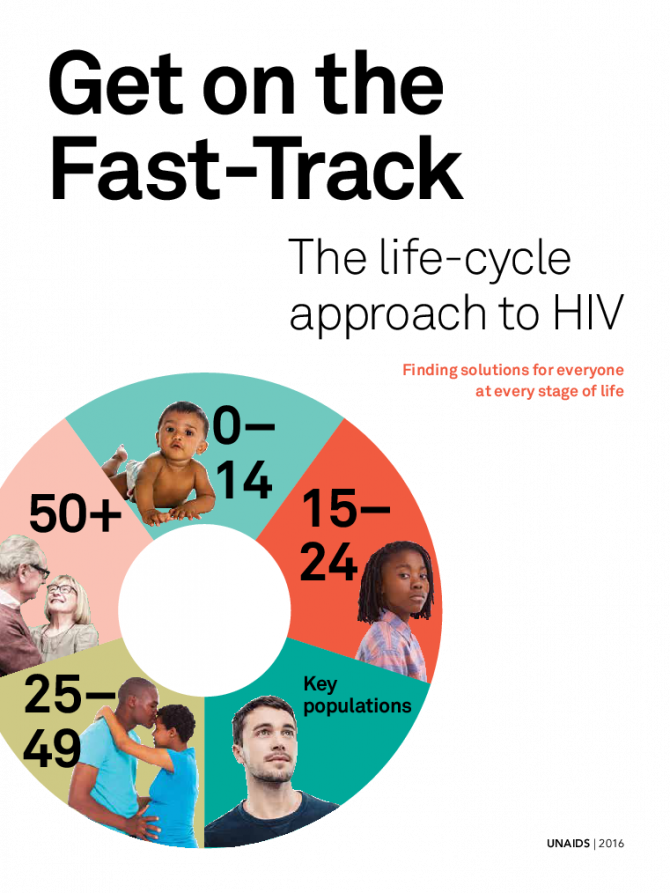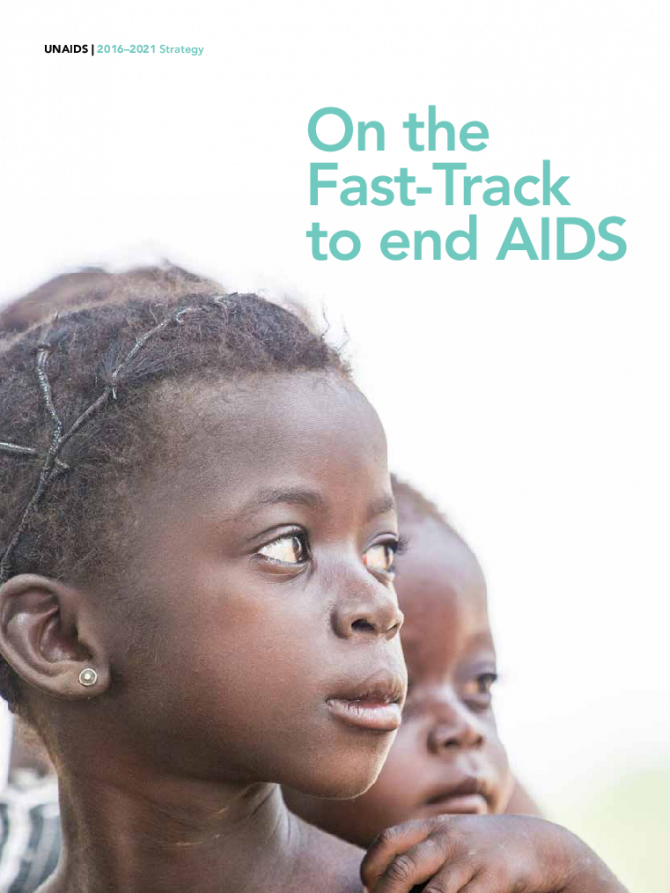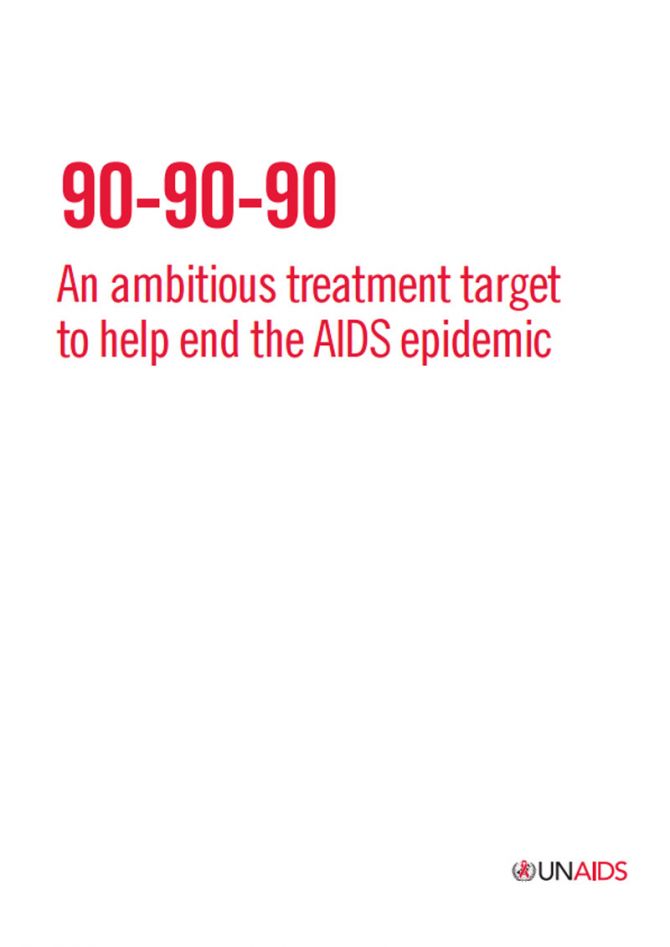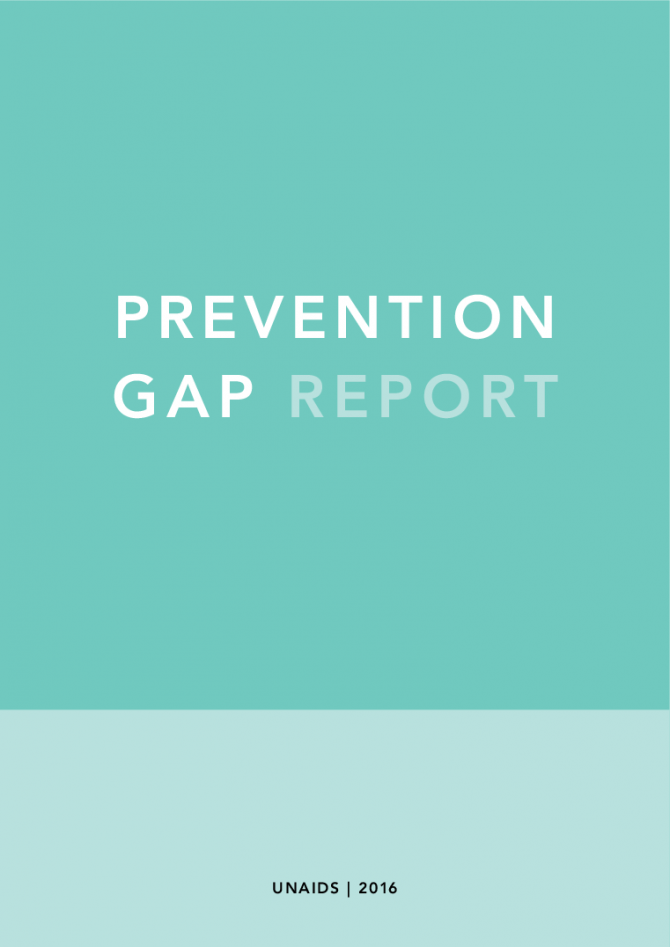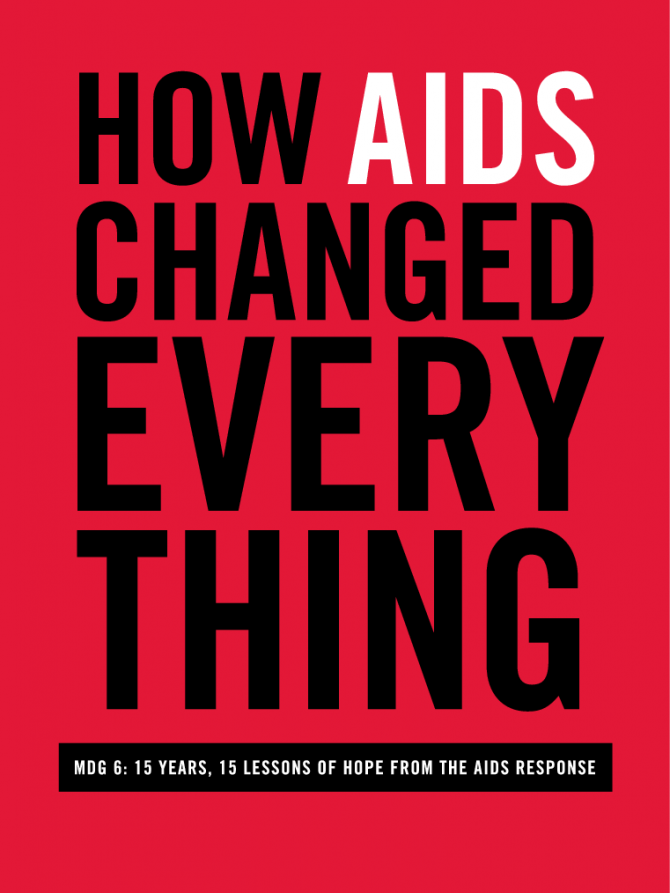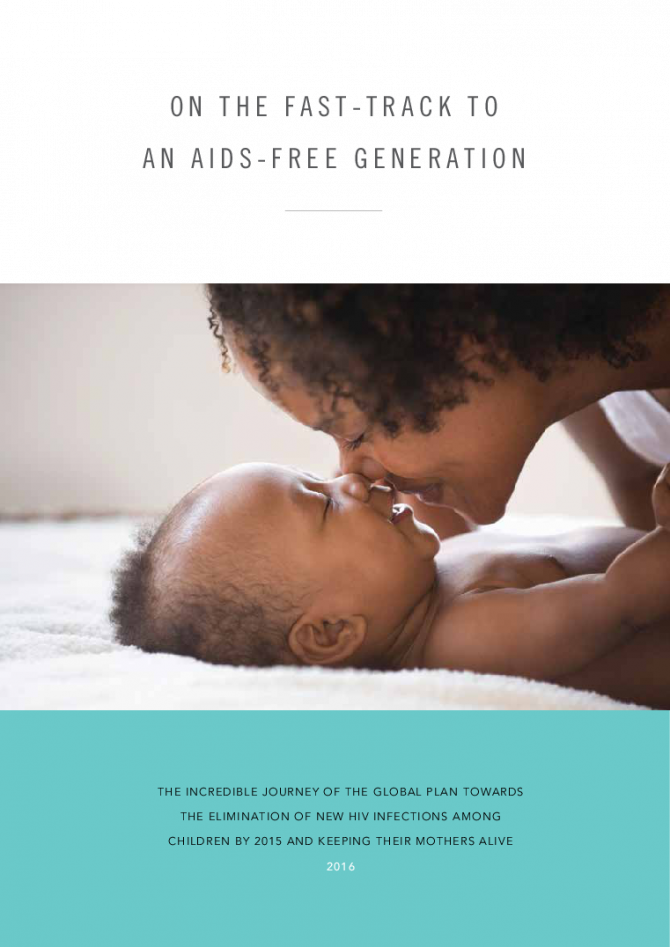Documents
Invest in HIV prevention
15 November 2015
Quarter for HIV Prevention (#quarter4HIVprevention) is a campaign to recapture imagination and hope for HIV prevention. It provides prevention choices for people at risk, and—most importantly—protects them from HIV infection. Most importantly, it leaves no one behind. Let us invest in HIV prevention; let us get to zero new HIV infections.
Documents
Get on the Fast-Track — The life-cycle approach to HIV
21 November 2016
In this report, UNAIDS is announcing that 18.2 million people now have access to HIV treatment. The Fast-Track response is working. Increasing treatment coverage is reducing AIDS-related deaths among adults and children. But the life-cycle approach has to include more than just treatment. Tuberculosis (TB) remains among the commonest causes of illness and death among people living with HIV of all ages, causing about one third of AIDS-related deaths in 2015. These deaths could and should have been prevented. Download slide deck
Documents
UNAIDS Strategy 2016-2021
10 August 2015
The UNAIDS 2016–2021 Strategy is a bold call to action to get on the Fast-Track and reach people being left behind. It is an urgent call to front-load investments. It is a call to reach the 90–90–90 treatment targets, to close the testing gap and to protect the health of the 22 million people living with HIV who are still not accessing treatment. It is a call to redress the deplorably low treatment coverage for children living with HIV.
Documents
90–90–90 - An ambitious treatment target to help end the AIDS epidemic
01 January 2017
Documents
AIDS by the numbers — AIDS is not over, but it can be
21 November 2016
Huge progress has been made since 2000 and millions of lives have been saved. But there are still important milestones to reach, barriers to break and frontiers to cross. The world has agreed to meet a set of global targets by 2020 as part of UNAIDS Fast-Track strategy to end the AIDS epidemic as a public health threat.
Documents
Prevention gap report
11 July 2016
Efforts to reach fewer than 500 000 new HIV infections by 2020 are off track. This simple conclusion sits atop a complex and diverse global tapestry. Data from 146 countries show that some have achieved declines in new HIV infections among adults of 50% or more over the last 10 years, while many others have not made measurable progress, and yet others have experienced worrying increases in new HIV infections. More on the Prevention Gap report | Slides are also available for download | Download summary
Documents
How AIDS changed everything — MDG6: 15 years, 15 lessons of hope from the AIDS response
14 July 2015
We have reached a defining moment in the AIDS response. Against all odds, we have achieved the AIDS targets of Millennium Development Goal 6. AIDS changed everything. In these pages are valuable insights and ground-breaking and heart-warming experiences from the innovative and exciting work that partners, communities and countries have done and are doing in the AIDS response. There are also heart-breaking stories about the challenges that still remain. More on How AIDS changed everything
You can also view the report on Issuu Report with no annexes Annexes only
Documents
On the Fast-Track to an AIDS-free generation
08 June 2016
This report presents the final results of the Global Plan towards the elimination of new HIV infections among children by 2015 and keeping their mothers alive. It summarizes country progress from 2009 to 2015. Entitled “On the Fast-track to an AIDS-Free Generation”, the report also highlights programmatic interventions undertaken at the country, regional and global levels. The end of the Global Plan heralds the new effort to stop pediatric AIDS, Start Free Stay Free AIDS Free which was launched in 2016
Country-specific progress fact sheets are available here


